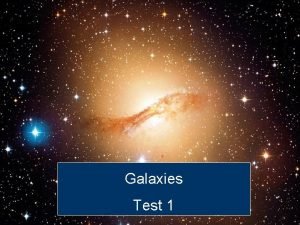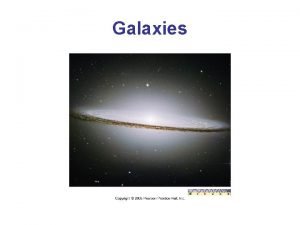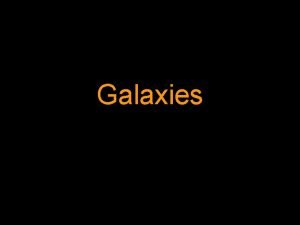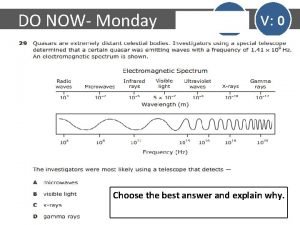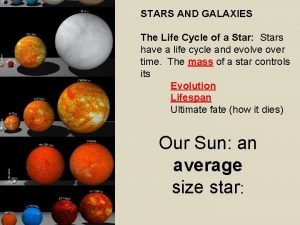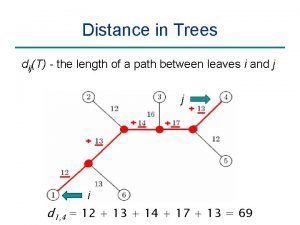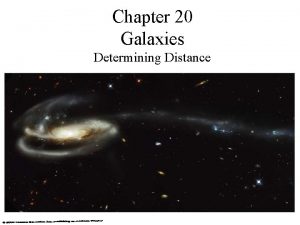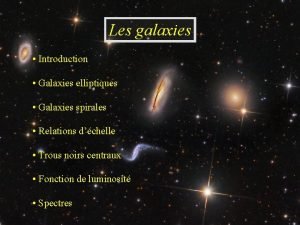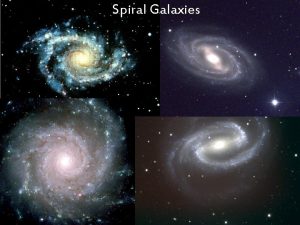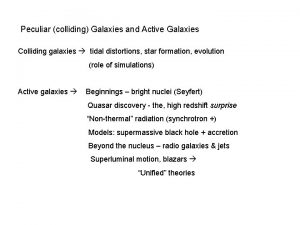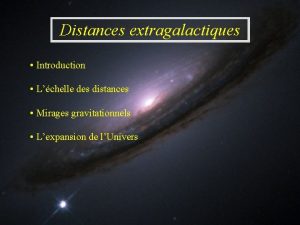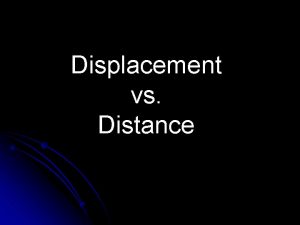Distances to Galaxies How can the distance to

















- Slides: 17

Distances to Galaxies

• How can the distance to far away galaxies be determined?

• What about galaxies closer to the Milky Way? • Galaxies in the local group don’t follow Hubble’s Law


• What about a star in our own galaxy that is 15000 light years away? • At this distance the parallax angle would be 0. 00022”

Standard Candles • If the star (or galaxy) has the same strength of light, the distance can be determined from its apparent brightness.


Main Sequence Fitting • Stars with similar colour and spectra will have similar brightness. • Main sequence stars with the same colour as the sun will have approximately the same intrinsic brightness. • Can be easily identified within our galaxy or neighboring galaxies. (100, 000 Pc)

Cepheid Variables • These are pulsating stars • The period of pulsation is directly related to their brightness. • Observing the period of pulsation tells us how intrinsically bright it is.


• Can be seen in galaxies further away than main sequence stars (~5 MPc)

Type Ia Supernova • A white dwarf has a maximum mass of 1. 4 solar masses • If a white dwarf gains mass from a companion star and goes over this limit it explodes as a Type Ia Supernova. • This type of supernova always has the same brightness. • Because Supernovas are so bright they can be seen across the universe (> 100 MPc)





• What is the farthest object we can see? • What was the most recent, visible supernova? • How often do type IIa Supernova occur? • What is the difference between a supernova and a hypernova?
 4 types of galaxies
4 types of galaxies Facts about elliptical galaxies
Facts about elliptical galaxies Type of galaxy
Type of galaxy Chapter 30 galaxies and the universe
Chapter 30 galaxies and the universe How are galaxies classified? *
How are galaxies classified? * Th eirregulars
Th eirregulars Billions of galaxies
Billions of galaxies Evolution of galaxies
Evolution of galaxies What are galaxies
What are galaxies What waves are produced by stars and galaxies
What waves are produced by stars and galaxies Spiral elliptical and irregular
Spiral elliptical and irregular Era of galaxies
Era of galaxies Galaxies lesson plan
Galaxies lesson plan Brainpop galaxies quiz answers
Brainpop galaxies quiz answers Life cycle of galaxies
Life cycle of galaxies Tipus de galaxies
Tipus de galaxies Most galaxies in the inner region of a large cluster are
Most galaxies in the inner region of a large cluster are Tree distances i
Tree distances i
